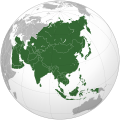This article is missing information about the extinction dates of some of the languages and dialects.(November 2023) |
| Language Endangerment Status | |
|---|---|
| Extinct (EX) | |
| |
| Endangered | |
| Safe | |
| |
Other categories | |
Related topics | |
 UNESCO Atlas of the World's Languages in Danger categories | |
This article is a list of languages and dialects that have no native speakers, no spoken descendants, and that diverged from their parent language in Europe.










